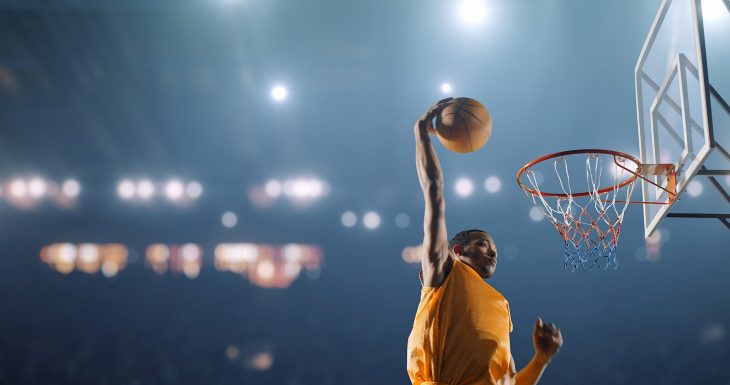
Whether you’re a sports fan or a casual spectator, you’ve likely heard of basketball. Basketball is one of the most popular sports in the world. Too popular and part of normalcy that thousands of fans look forward to NBA leagues every year and even games at the Olympics. Despite its popularity, however, only a few really know and understand even the most basic basketball terms. Learning basketball terminology will help you not only understand the game better but also fully appreciate the sport and its entire culture!
What is basketball?
Before diving into the basketball terms list, going over the definition of basketball is an important first step.
Basketball is a ball sport, where two teams compete against each other on a court. The goal is to shoot the basketball into the opponent’s basket while defending your own team’s basket. This makes basketball both a defensive and offensive sport.
What is the history of basketball?
Unlike other types of sports, basketball’s roots lie solely in the United States. In December 1891, a physical education teacher named James Naismith invented the game. Naismith wanted to keep his students active during his classes. To do so, he invented a game where students had to pass a ball to their teammates and score by shooting the ball into a basket he mounted on the wall.
He attached a fruit basket to the wall. The peach basket had its bottom intact at first. After realizing it was a hassle to retrieve the ball after every score, Naismith removed the bottom of the basket. At the time, there was also no dedicated ball for basketball, so players used a soccer ball instead.
The game continued to develop in the following year as Naismith officially named it “basketball,” and hosted the first official game in the YMCA gymnasium in New York. The game continued to spread throughout the United States and Canada until professional basketball teams arose in the 1920s.
By the 1930s, the International Basketball Federation (FIBA) was formed. Its eight founding nations are Argentina, Czechoslovakia, Greece, Italy, Latvia, Portugal, Romania, and Switzerland. Over the years, tournaments and other national organizations were formed, proving that basketball was a sport played and loved by many.
Today, basketball is one of the most popular sports in the world. This is no surprise as basketball is often referenced in pop culture and our everyday lives. You’ll hear about basketball in film, television, literature, and even mundane conversations. Sometimes, basketball is also the focus of the story, such as in sports anime and video games.
Rules of Basketball
Before learning basketball terms, it is important to first learn how to play basketball. These are the common basketball rules that every player and fan should know about.
Players should wear the correct attire.
Like tennis and volleyball, basketball has its own proper uniform. Basketball players must wear a jersey, shorts, socks, and proper basketball shoes. Players must tuck their jerseys into their shorts, and they must remove any accessories before the game begins.
Because basketball is a fast-paced sport, accidents can happen. Wearing the proper attire can help prevent injuries. For instance, basketball shoes have special soles that can make it easier to run across the court. Basketball shoes also offer support for the player’s ankles.
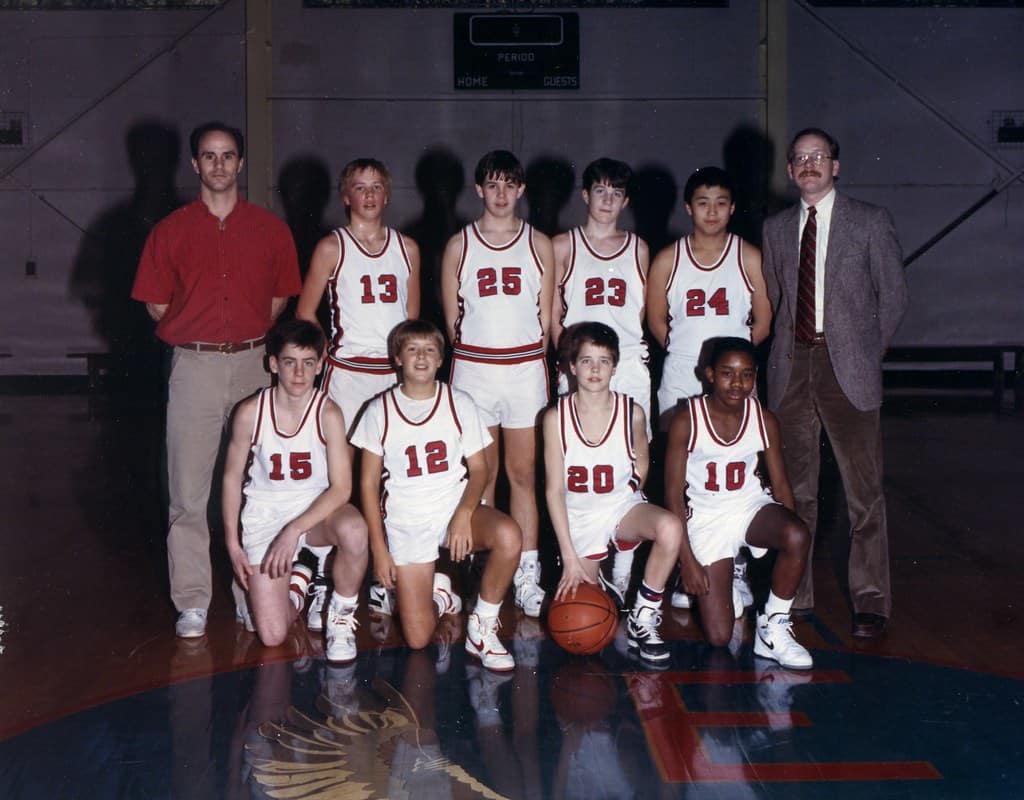
Only five players from each team can play on the court.
Even if a basketball team has over five players, there must only be five that are on the court during the game. Otherwise, the team will lose possession of the ball. The referee will give the ball to the other team instead.
Players must dribble the basketball if they are not passing or shooting the ball.
You’ll notice that basketball players can’t just carry the ball around while walking. Players always have to dribble the ball while moving around the court. The only time they can stop dribbling is when they plan to pass or shoot the ball into the basket.
There is a time limit for shooting the ball.
In the National Basketball Association (NBA) and Women’s National Basketball Association (WNBA), a team must shoot the ball within 24 seconds. In the National Collegiate Athletic Association (NCAA), a team has 30 seconds to shoot the ball. If the team exceeds the time limit set, then they lose the ball. The referee gives the ball over to the other team.
While holding the ball, a player must remain inbounds.
The basketball has lines that mark the boundary of the playing field. Crossing the line, for even just an inch, will count as out of bounds. For instance, if the player holding the ball accidentally touches or steps on the line with their foot, then this counts as out of bounds. The referee will hand over the ball to the other team.
Players can incur personal or technical fouls during a game.
Breaking any rules or exhibiting bad conduct can cause a player to incur fouls. When a player touches another player illegally, then the player commits a personal foul. When a player curses at another player, a referee will call for a technical foul.
Fouls can cause penalties such as a free throw for the other team. Repetitive fouls can cause a referee to eject a player from the game.
The team with the higher score wins the game.
Just like most games, the goal in basketball is to score more points than the opponent. The team with the higher score after the set time will win the match and advance to the next game.
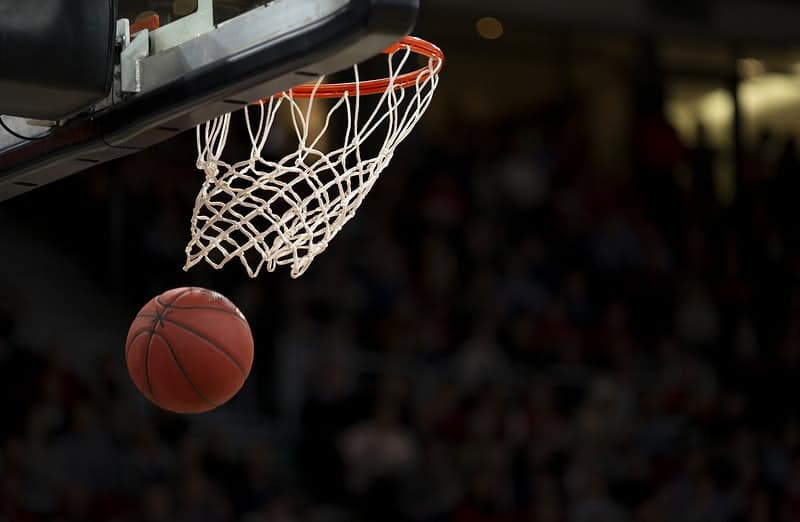
With the basic rules of basketball out of the way, it is now time to learn the different basketball terms. If you’re curious about the basketball terms and definitions for team positions, court, gameplay, and more, then keep on reading!
Basketball Terms: Team Positions
During a basketball game, each team can have five players on the court. Usually, coaches will assign each member with a specific position or role according to the talents and skills of each individual.
In a team, there are five positions: point guard, shooting guard, small forward, power forward, and center. Each position is also assigned a number from 1 to 5. Keep in mind that this differs from the player’s jersey number.
Point Guard
The point guard, or PG, is the team’s leader on the court. A team’s point guard is in charge of the team’s offense. Their role is to steal the ball from the other team and pass it to their own teammates. Because of this, the point guard is usually the best dribbler and passer on the team.
The PG’s assigned number is 1.
Shooting Guard
As the name suggests, the shooting guard, or SG, is in charge of shooting the ball. The shooting guard is the team’s best shooter, who can make long-distance shots from the three-point and long mid ranges. This is why people also call the shooting guard the team’s “wing.”
The SG’s assigned number is 2.
Small Forward
Assigned number 3 is the small forward or SF. In basketball terms, the small forward refers to the member of the team that roams all over the court. Similar to the shooting guard, the small forward is skilled in scoring with long shots. However, the small forward can also make close shots. In fact, the small forward knows how to pass through players to get closer to the basket.
Power Forward
The power forward, or PF, is number 4. A team’s power forward stays near the basket. Their primary role is to defend their team’s basket by rebounding or blocking the other team’s shots. Aside from this, the power forward will also receive passes to make long shots.
Usually, the power forward is one of the tallest members on the team.
Center
Player number 5 is the center or C. The center is usually the easiest player to spot on the court because they are the tallest player on the team. Together with the power forward, the center stays near the basket as the team’s defense. The center can also score with close shots when their team has the ball.
Substitute
The substitute is not an official position in the team, but one of the basketball terms you’ll hear a lot in games. Because accidents can happen, most teams will have over five players. Those who start the game off on the bench can later enter as a substitute for one of the players.
A substitute can also fill in for a player who was ejected from the game because of too many fouls or violations.
Starting Lineup
A starting lineup refers to the five players who start the game. In many cases, teams will usually arrange their starting lineup according to a strategy. Some teams will start the game with their best players, while some teams will reserve or hide their best players until the second half of the game.
Basketball Terms: Equipment and Court
Of course, the game wouldn’t be possible without the equipment and playing area. There are also basketball terms for each one.
Ball
Each ball sport has its own unique ball. The basketball, or simply ball, is spherical. While it ranges in size and color, it is usually orange with black lines around it. Basketballs are inflatable, with an outer layer of leather, rubber, or synthetic composite.
The NBA standardizes their basketballs with a maximum circumference of 29.5 inches. Meanwhile, the WNBA should have a maximum circumference of 29 inches. This is the size most high school and junior leagues use.
Some people also call this ball “b-ball,” which is one of the basketball slang terms.

Backboard
The backboard refers to the board that mounts the basket or hoop. It is rectangular and usually made of wood or fiberglass. The blackboard has a small square above the basket. This acts as a guide for players to aim their shots at.
Basket
One of the easiest basketball terms to learn is the basket. There are two baskets on the court, with one for each team. Each basket is attached to a backboard, keeping it 10 feet above the ground.
The basket has a rim or hoop with a diameter of 18 inches. The net is usually nylon rope, but it can also be steel or polyester. It hangs from the rim and is bottomless, making basketballs slip through easily after a score.
People also call the basket by its parts, so you’ll often hear players refer to the basket as goal, hoop, or net.
Shot Clock
The shot clock is a timer that counts down the number of seconds a team has to shoot. The team in possession of the ball must keep track of the shot clock to pace themselves properly. Otherwise, they lose their chance to score.
Usually, you’ll find the shot clock directly above the backboard.
Court
The basketball court, or simply court, is the playing field in basketball. It is rectangular, with several markings to show different sections of the court.
Indoor and outdoor basketball courts vary in material and size. Most indoor courts are made of polished maple wood. Meanwhile, outdoor courts have concrete or asphalt surfaces.
As for the size, there are no strict guidelines for courts of amateur basketball, such as those in school gyms. In the NBA, however, they standardize courts to be 94 by 50 feet. On the other hand, FIBA states that the court should be 91.9 by 49.2 feet.
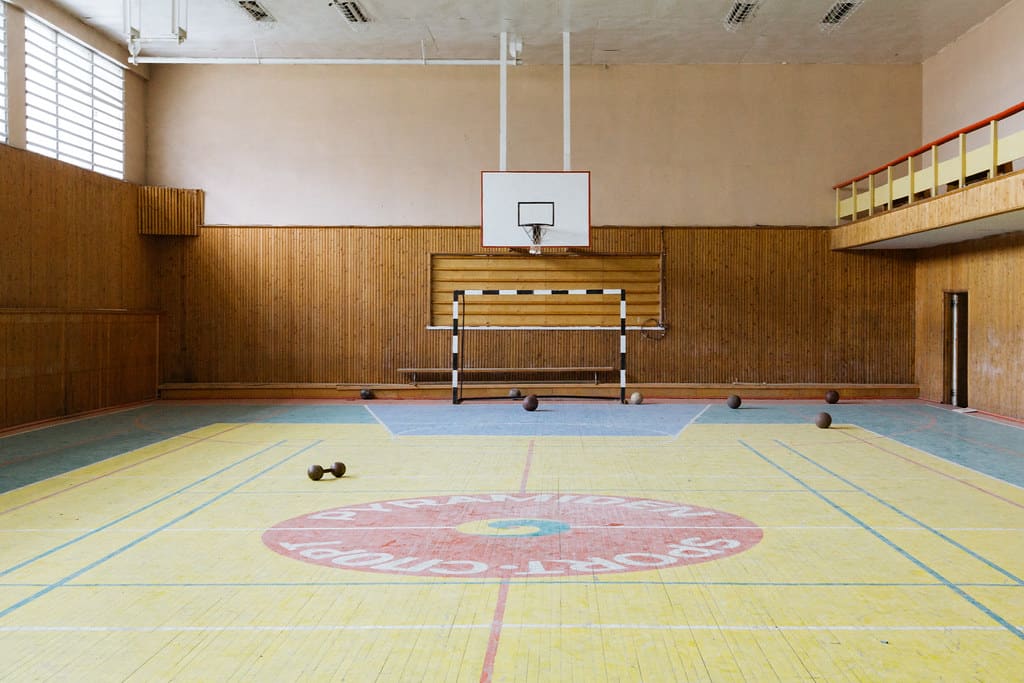
Baselines
The baselines are the lines that run across the ends of the court. They run parallel behind the backboard and mark the playing boundary for the players.
Another name for baselines is end lines.
Free-throw lane
The free-throw lane refers to the area between the baseline and the free-throw line where players can shoot free throws. However, players cannot stand in the opponent’s free-throw lane for too long. Staying for longer than three seconds can incur a foul. This is why people also call the free-throw lane the restricted area.
Other names for the free-throw lane are key, foul lane, and paint. When people stand in the free-throw lane, this means they are “in the paint.”
Midcourt Line
In basketball terms, the midcourt line refers to the line running down the middle of the court. It divides the basketball into two halves, namely the frontcourt and the backcourt. The midcourt line is also where jump balls occur.
Other names for the midcourt line include timeline and half-court line.
Sidelines
As the name suggests, the sidelines refer to the lines that run along the length of the court’s sides. Together with the baselines, they mark the boundary for the court’s playing field.
Out-of-Bounds
Out-of-bounds refers to the area outside the baselines and sidelines. Any ball a player shoots successfully from out-of-bounds is invalid.
When a player makes an inbound pass, they also make it from a point out-of-bounds.

Low Post
In basketball terms, a low post refers to the area around the basket. You’ll find the low post on either side of the bottom of the free-throw lane. This is where the center and power forward usually position themselves.
Basketball Terms: Gameplay and Tactics
At a basketball game, you’ll often hear coaches and commentators use terms specific to the game. Some of them are easy to understand. However, some can sound unfamiliar and confusing. This next section of gameplay and other basketball terms, however, can help you follow a basketball game like a pro!
Assist
When people use the word, “assist,” they usually mean offering their assistance or help. Assist, in basketball terms, differs from that. When a player passes the ball to their teammate and the teammate scores immediately after, then the player’s pass is an “assist.” In a way, an assist is a pass that sets up a score.
Another name for assist is dish.
Ball Fake
A ball fake, or simply fake, refers to the act of faking a pass or shot. This is a strategy many players use to throw off their opponent. For example, a player who has the ball can fake a pass to the right, which can mislead the opponent to move in that direction. This leaves their left side open and allows them to slip past the opponent.
Another name for this is pass fake.
Behind-the-back Dribble
Behind-the-back dribble is a type of dribble where the player dribbles the ball from one hand to the other. One hand is in front of their body, while the other is behind their back. Learning how to do the behind-the-back dribble properly can give a player more options on how to avoid a steal from the opponent.
Behind-the-back Pass
As the name suggests, a behind-the-back pass refers to a pass that a player makes behind their body. Players usually make this kind of pass when an opponent is blocking their front.
Between the legs dribble
Another example of self-explanatory basketball terms is between the legs dribble. This is a type of dribble where the player dribbles the ball from one hand to another, with the ball passing in between their legs.
While the term is easy to understand, it isn’t so easy to execute. A common mistake beginners make when making a between the legs dribble is failing to catch the ball with their other hand. This is why dribbling exercises are important for basketball players.
Blocking
Blocking is a common defense tactic for most sports, including volleyball. In basketball terms, blocking is the same. Blocking refers to when a player deflects an opponent’s score. A successful block will send the ball in the other direction, where the blocker’s team can take possession of it.
Bonus Free Throw
When a player or team commits more than the allowed number of fouls in one half of the game, then the opposite team gains bonus free throws. The opposite team who gets the bonus free throws is called “in the bonus.”
Another name for a bonus free throw is one-on-one.
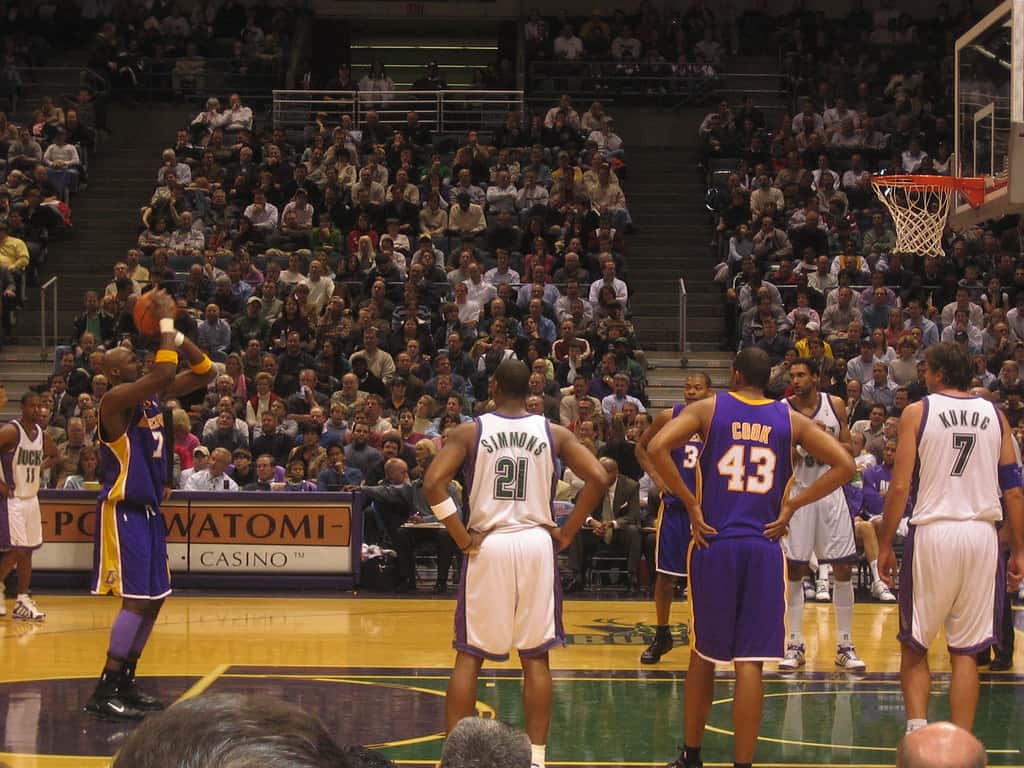
Carrying the Ball
In basketball terms, carrying the ball refers to a type of dribbling where the player uses both hands at the same time. Holding the ball with both hands and turning it over also counts as carrying the ball.
This is illegal in basketball. A player who accidentally carries the ball will receive a foul or violation from the referee.
Another name for carrying is palming.
Charging
Another example of basketball terms that refer to violations is charging. When a player with the ball rushes or “charges” into a defender who is not moving, the player commits charging. This can happen on accident or purpose. Either way, it is still an offensive foul.
Chest Pass
A chest pass occurs when a player passes the ball from their chest to another player’s chest. To do this, the player pushes the ball away from their chest with both hands while aiming for their teammate’s chest.
This is one of the fastest types of passes because the ball travels in a straight line. However, a player must make sure an opponent is not blocking their way. Otherwise, their opponent can easily intercept the chest pass mid-air.
Dead Ball
One of the most common basketball terms is the dead ball. A dead ball refers to a ball that is currently not in play. In other words, the ball is “not alive.” An example of a dead ball is a ball that falls out of bounds. In this case, a player must put it back in play by making an inbounds pass.
Double Dribble
To move across the court with the ball, a player must simultaneously dribble while running. However, a common mistake beginners often make while doing this is a double dribble. A double dribble occurs when a player dribbles, stops, then dribbles again.
A player must not stop dribbling unless they plan to shoot the ball or pass it to a teammate. Committing double dribble results in a loss of possession for the team.
Double Team
If you’re looking for basketball terms that refer to defensive tactics, then here is double team. A double team refers to the defensive act of two players guarding one player. Players can double team the player with the ball or the one who they suspect will receive the ball.
Dunk
Of all the basketball terms, dunk might be the most popular. A dunk, or slam dunk, refers to the act of scoring by shooting the ball directly into the basket with one or both hands on the rim. In other words, the player is “dunking” the ball into the basket.
When this happens, the ball does not travel through the air. Not all players can accomplish a slam dunk. This is why slam dunks are often a key moment in basketball games.
In pop culture, people use slam dunk as slang for accomplishing something with little to no effort. Slam Dunk is also a popular Japanese sports anime.
Elbow
In science, an elbow simply refers to a part of your arm. In basketball terms, an elbow refers to a foul where a player hits another player with their elbow. Usually, a player will commit an elbow on purpose. Whether or not they successfully elbow their opponent will result in a foul either way.
Free Throw
In basketball terms, a free throw refers to a scoring attempt that the other team cannot oppose or block. Each successful free throw earns the team one point.
A player makes a free throw from a distance of 15 feet from the basket. The free-throw line, or charity stripe, marks the point where the player stands.
Foul
What is a foul in basketball? A foul refers to any act that violates the rules of basketball. However, this does not include floor violations.
There are several types of fouls. This includes the personal foul, technical foul, and flagrant foul. There is also the unsportsmanlike foul and disqualifying foul. These types can often overlap, and the type of foul depends on the association hosting the match. The officials will assess the play and decide which type of foul the action falls under.
Held Ball
Sometimes, two players, one from each team, will hold the basketball at the same time. In this instance, both players are trying to take possession of the ball, and neither successfully wins over the other. In basketball terms, this situation is called a held ball.
When a held ball occurs, the referee will call for a jump ball or a change in possession. It is important to note that a held ball can only occur if neither player commits a foul while trying to claim the ball.
Inbounds Pass
When a dead ball happens, a player has to make an inbounds pass. In basketball terms, an inbounds pass refers to throwing a ball from a point outside the sidelines or baselines. An inbounds pass will put the ball back into play.
A player from the opposing team can try to intercept an inbounds pass, so the player holding the ball should aim well.
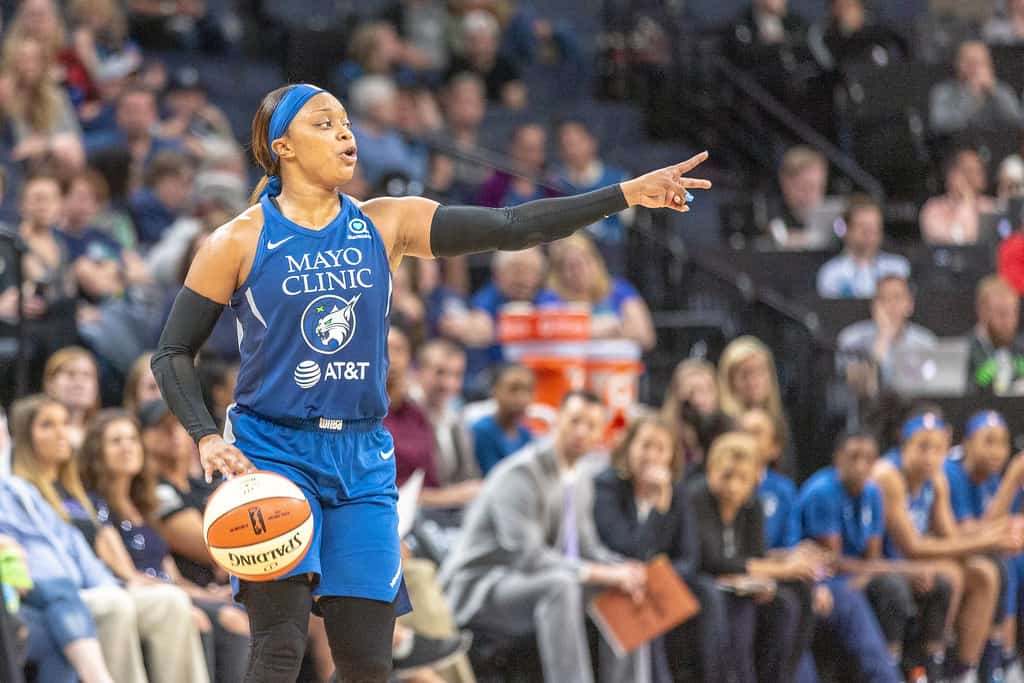
Incidental Contact
Some people might think that every contact between players is immediately a foul. However, this is not true. There are some cases where incidental contacts happen. An incidental contact refers to legal contact between players. What this means is a player who contacts an opponent in a way that does not affect the play does not incur a foul.
A player accidentally brushing their hand against an opponent while reaching for a loose ball is legal. Sometimes, players will also bump against one another while trying to block them. Learning the difference between basketball terms such as incidental contact and fouls will help players strategize better.
Inside Shot
In basketball terms, an inside shot refers to a shot a player makes near the basket. When a player stands beside or in front of the basket, they are “inside.” A successful inside shot will require a player to be tall, have a high jump height, or both.
Jump Ball
At the beginning of a basketball game, the referee stands on the midcourt line with two opposing players on either side. To start the game, the referee tosses the game into the air. Then, the two opposing players try to take possession of the ball.
A jump ball refers to the act of tossing the ball into the air. In other words, it is what starts every basketball game. Jump balls can also occur after a held ball when the referee cannot decide which team the ball belongs to.
Jump Shot
In billiards terms, a jump shot refers to a shot where the player intentionally makes the cue ball jump in the air. In basketball terms, a jump shot refers to a shot where the player tosses the ball while they are in the air.
A jump shot differs from a slam dunk. In a slam dunk, a player jumps and dunks the ball directly into the basket. In a jump shot, the player jumps from a distance and throws the ball toward the basket.
Some also call the jump shot “j” or “jumper.”
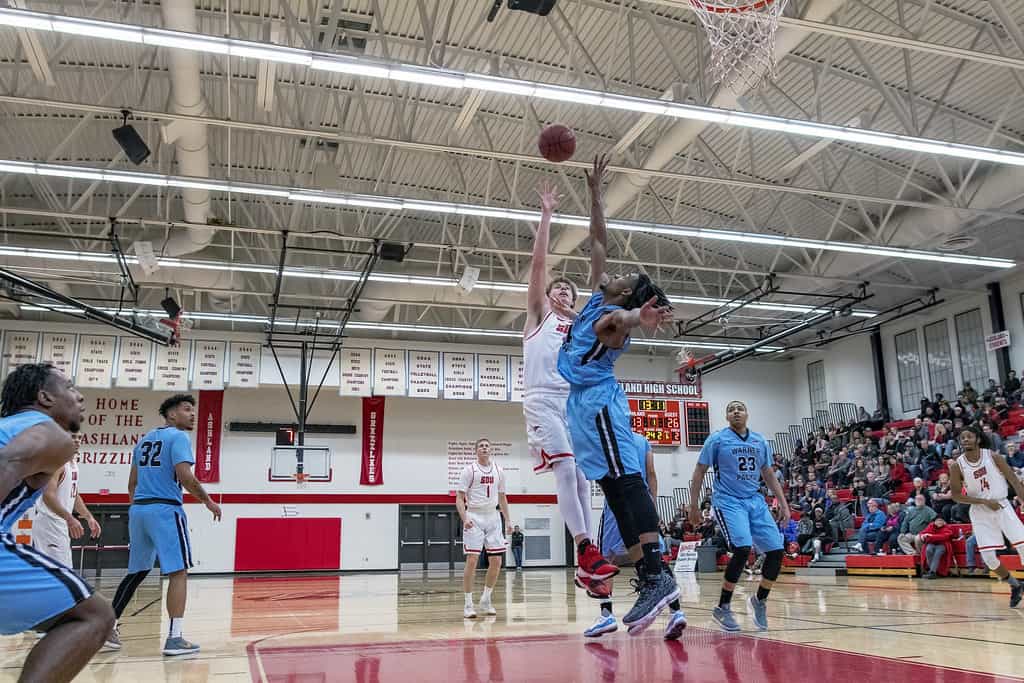
Live Ball
A live ball is the opposite of a dead ball. When a ball is in play, it is a live ball. To ensure it stays a live ball, the player must keep the ball inbounds. Once a player accidentally brings the live ball out of bounds, then it becomes a dead ball.
Offense
Next on this list of basketball terms is the offense. This term might confuse some as the offense in basketball can change many times in a single game. In a basketball game, the offense refers to whichever team possesses the ball. A team can therefore be the offense in one second and then become the defense in the next.
Since the goal in basketball is to score more points than the other team, then players must do their best to be the offense.
Off the Dribble
Sometimes, players will try to shoot the ball as they run toward the basket. This is what they call off the dribble or shooting off the dribble. Because a player is in motion, this is not an easy shot for them to make. However, shooting off the dribble is one offensive tactic that every player should master. This is because shooting off the dribble helps a player advance toward the basket while escaping blockers.
Open
You’ll often hear players yell, “I’m open!” In basketball terms, a player is “open” when no guards are blocking them. Usually, a player in possession of the ball will pass the ball to an open player. This is because passing to an open player yields fewer chances of having the ball stolen.
Pass
One of the most common basketball terms is the pass. A pass refers to the act of passing the ball to a teammate. To pass a ball, the player must directly throw or bounce the ball toward their teammate.
Defensive players can intercept passes to claim possession of the ball.
Period
In basketball terms, a period refers to a segment of the game. For NBA, FIBA, and NCAA games, there are four periods in a single basketball game, which people also call quarters. After two quarters, then the game is at half-time.
A single quarter in an NBA game lasts 12 minutes, while FIBA and NCAA quarters last 10 minutes each.
Possession
When a team has possession of the ball, this means they have the ball. A team in possession of the ball also refers to the offense. The team that doesn’t have possession of the ball must then protect their basket while trying to steal the ball from the offense.
Pull-back Dribble
The player in possession of the ball can expect players from the opposing team to surround them. They will try their best to steal the ball and prevent the player from scoring. When this happens, the offensive player can find their path to the basket blocked. One way to escape from this situation is to perform a pull-back dribble.
To perform a pull-back dribble, the player has to dribble while pulling or moving away. The goal is to avert pressure from defenders by placing distance between the player and the defense.
Rebound
A rebound refers to a ball that bounces off the backboard or basket after an unsuccessful attempt to score. There are two types of rebounds: the offensive rebound and the defensive rebound. The offensive rebound happens when the offensive team who attempted to score regains control of the ball. Meanwhile, the defensive rebound refers to a ball that changes possession to the team that did not attempt the score.
Screen
In basketball terms, a screen refers to an offensive player who stands in between their teammate with the ball and a blocker. The screen acts as a diversion for the defense. A successful screen will leave the teammate with the ball open to make the shot.
Three-Pointer
When a player makes a shot from beyond the three-point line, they score a three-pointer or a 3-point shot. As the name suggests, this shot will earn the team three points. However, both feet must be behind the three-point line.
Other names for a three-pointer include three-point field goal, three, and 3FG.
Traveling
Traveling is something many wish for. For basketball players, however, traveling is something they want to avoid at all costs. This is because traveling is considered a violation of basketball rules. When a player walks or runs across the court without dribbling the ball, they are traveling.
Another term for traveling is walking.
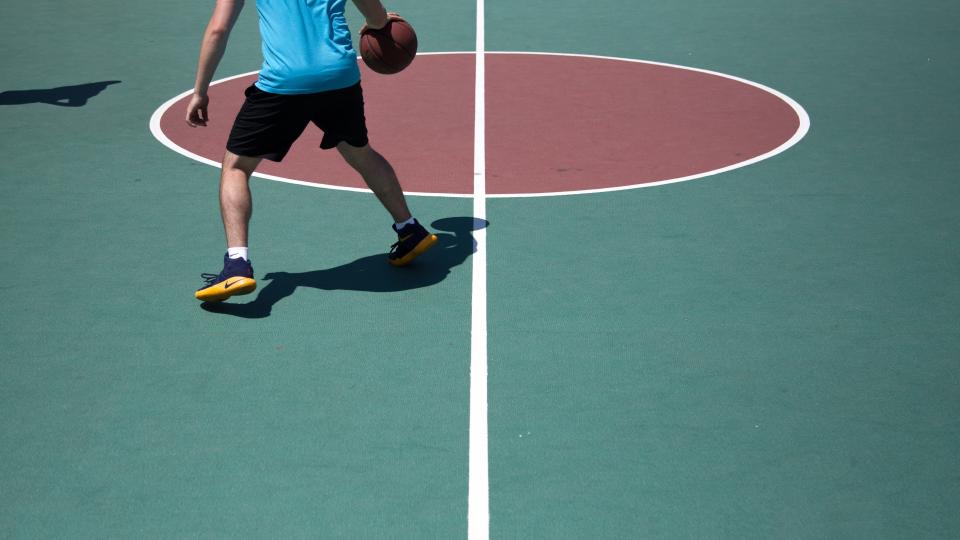
Triple-Double
What is a triple-double in basketball terms? A triple-double refers to a player who single-handedly achieves three offensive tactics and repeats each one in double figures. One example is an individual who scores 10 points, performs 10 rebounds, and executes 10 assists.
Violation
Some might confuse a violation for a foul and vice versa, but these two are not the same in basketball terms. A violation refers to failure to follow basketball rules. Unlike a foul, a violation will not earn the other team a free throw. Instead, a referee calls for an inbounds pass for the other team.
An example of a violation in basketball is traveling.
Was this page helpful?
Our commitment to delivering trustworthy and engaging content is at the heart of what we do. Each fact on our site is contributed by real users like you, bringing a wealth of diverse insights and information. To ensure the highest standards of accuracy and reliability, our dedicated editors meticulously review each submission. This process guarantees that the facts we share are not only fascinating but also credible. Trust in our commitment to quality and authenticity as you explore and learn with us.
